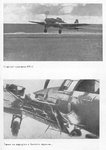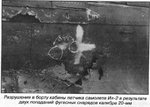renrich
Chief Master Sergeant
I don't know of another fighter that was purpose designed to use the landing gear as dive brakes before the F4U. Of course, the portion of the door which hung down in front of the main strut of the gear was the primary influence on dive speed. The Corsair was found to be able to dive at 85 degrees and was almost as accurate as the SBD which I believe made it slightly more accurate than the SB2C. I wonder how effective a dive bomber could be if a tank was moving at say 15 mph. Dive bombers had a difficult time hitting small ships(much larger than a tank) traveling at speeds of around 15 mph.




